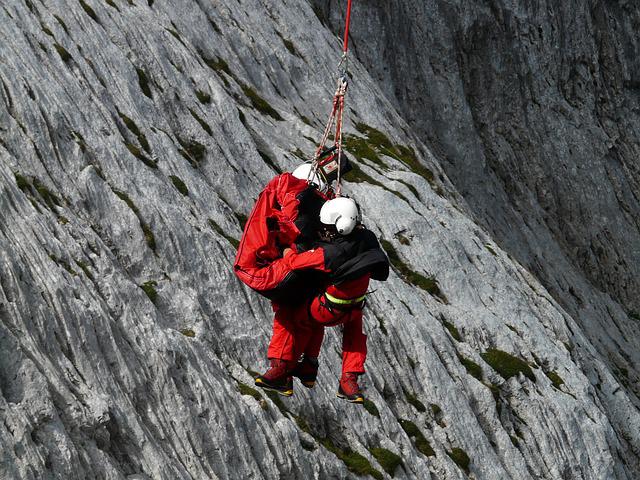
Suspension trauma is the human body's response to being vertically suspended in mid-air for a prolonged period of time. It is also known as ‘harness-induced pathology’ or ‘orthostatic shock while suspended’.
If no action is taken, prolonged suspension can lead to loss of consciousness, at which point there is a very real danger of death. Suspension trauma is a very real and serious threat to those who are often suspended, whether for work or as part of a hobby like rock climbing or abseiling.
Who is at risk of suspension trauma?
Depending on the situation, anybody could be at risk of suspension trauma. But these are the people most likely to suffer suspension trauma:
- Those who are suspended while working at height
- Those using harnesses for leisure purposes (caving, climbing, parachuting, etc.)
- Stunt performers
How does the body react to prolonged suspension?
When suspended vertically in mid-air for an extended period, a person’s veins can pool with blood. This actually leads to a 20% loss of circulating volume, resulting in an inappropriate redistribution of body fluids and - before long - fainting. If the individual can be rescued, they will regain consciousness and the distribution of body fluids will gradually return to normal.
But if the person is forced to remain in a vertical position, the body will not be able to pump enough blood to the brain. This can be fatal.
It may be impossible for the person to move or restore their own blood flow due to the physical and mental effects of suspension trauma, including:
- Exhaustion
- Dehydration
- Low blood sugar
- Fear
What are the symptoms of suspension trauma?
The most common symptoms of suspension trauma are listed below, but bear in mind that different people will have different experiences. If you suspect someone is suffering with suspension trauma, it should be treated as a life-or-death emergency.
- Pre-syncope (feeling faint and light-headed)
- Dizziness
- Nausea
- Flushing (the subjective sensations of warmth accompanied by reddening of the skin)
- Tingling and/or numbness in the arms or legs
- Anxiety
- Visual disturbance
What can I do to prevent suspension trauma?
Thankfully, there are ways to prevent the symptoms of suspension trauma if you ever find yourself in this dangerous situation.
The quickest way to reduce the risk of suspension trauma is to stand up. By standing up, the leg muscles contract and put pressure onto the veins, providing support and balance. This pressure makes it easier for blood flow to access the heart, and reduces venous pooling.
You can stand up in a suspended harness by using suspension trauma relief straps. When suspended, you can deploy these straps to create loops for your feet, where you will be able to simulate standing upright.
If you do not have access to suspension trauma relief straps, the following steps will help to prevent the onset of suspension trauma until you are rescued:
- If possible, you should adopt a sitting position to aid regular blood flow
- Move into a horizontal position as much, and as frequently, as possible
- If you have access to a hard surface, use your legs to push off from it to keep your muscles active
- Pump your legs frequently to maintain blood flow, and to prevent venous pooling
How quickly do people die from suspension trauma?
Suspension trauma can be fatal in as little as 10 minutes, but typically causes death within 15 to 40 minutes if left untreated.
Take the risks seriously!
Whilst death by suspension trauma is rare, the risks should not be ignored.
Modern safety harness design has progressed rapidly, and in the 21st century, and we are lucky to have access to reliable safety and rescue equipment. Make sure you have everything you need to stay safe!
Browse Height Safety Equipment >

